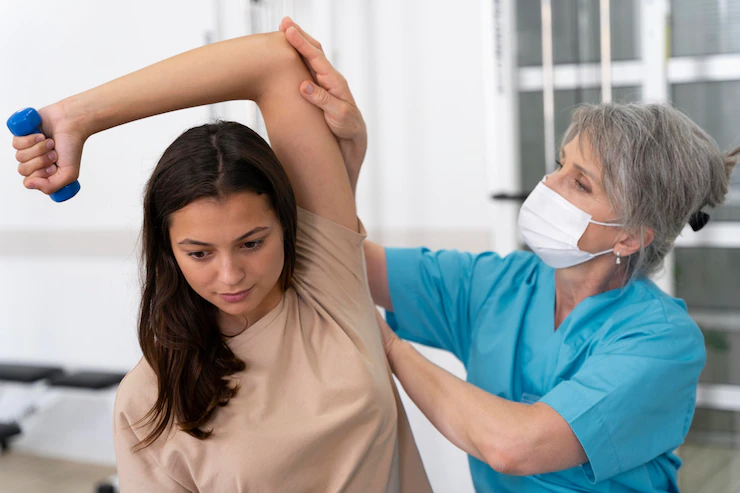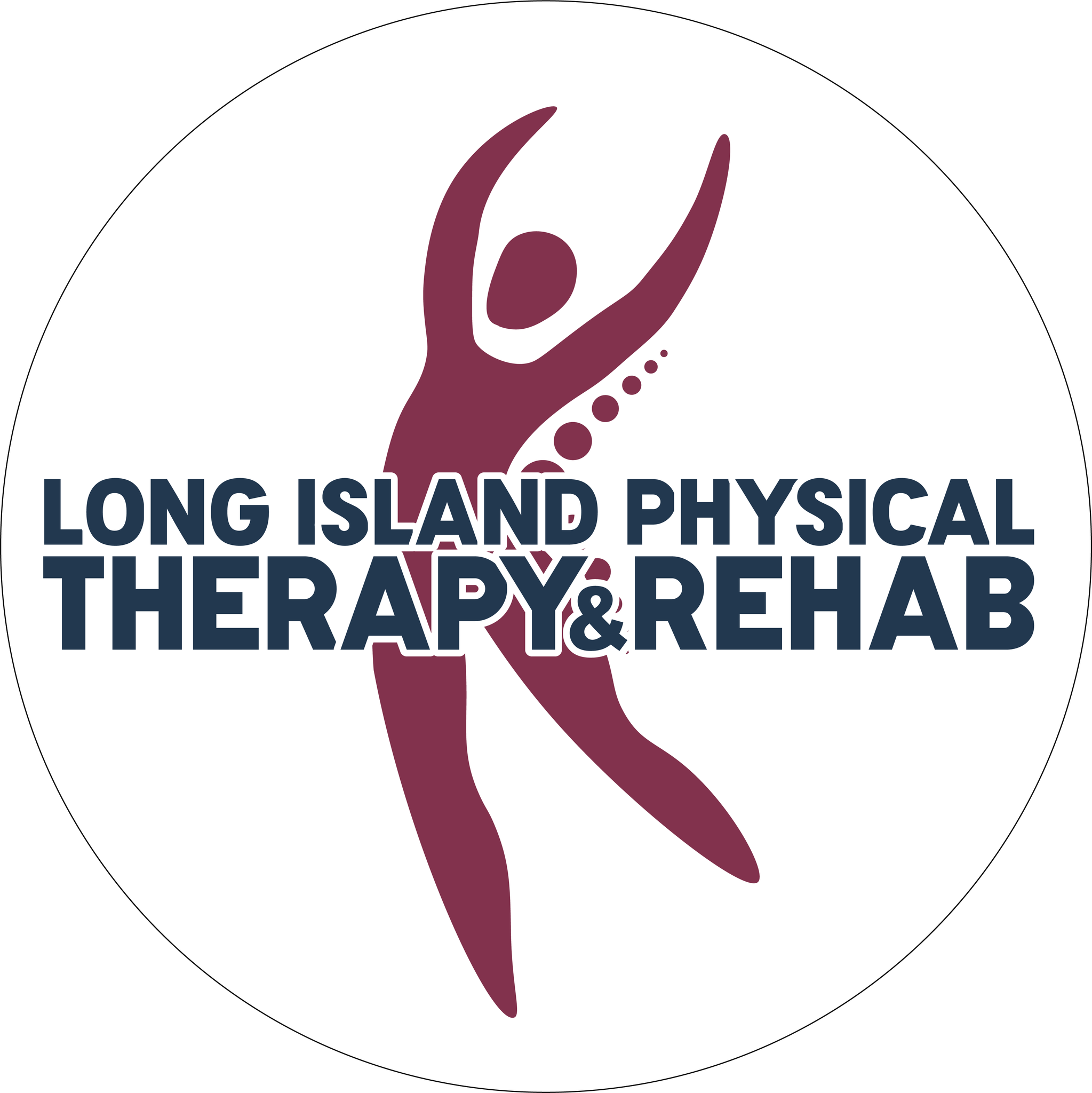Manual Therapy in Long Island
Natural, safe pain relief is possible with Manual Therapy
Do you have an injury, illness, or pain from a recent injury that won’t go away? You can get the relief you need from manual therapy. Our physical therapists use different tools and methods to reduce pain and improve function.
Please don’t wait any longer; let us help you on the path to recovery today!
What is manual therapy?

Manual therapy is a type of physical therapy in which the therapist uses their hands to find and fix problems in the body. Manual therapy tries to improve mobility, reduce pain, and help the body work better by moving joints, massaging soft tissues, and manipulating the spine. This type of physical therapy stands out from others because it uses the therapist’s hands instead of machines or equipment like treadmills or exercise bikes.
By relying on the precision of a skilled practitioner’s hands, manual therapy offers numerous benefits for those who are suffering from musculoskeletal issues. Its non-invasive nature has made it a preferred choice for many people seeking relief from chronic pain. Manual therapy can also be used with other treatments for improved outcomes.
No matter your needs or the severity of your condition, manual therapy can help you regain strength and mobility, allowing you to return to your daily activities and enjoy life again.
Types of manual therapy
Manual therapy techniques can assist physical therapy, from reducing stiffness to improving function. Manual therapy is any hands-on treatment that involves the therapist using their hands to manipulate the body’s joints, muscles, tendons, and ligaments. Here are some examples of manual therapies that may be used during physical therapy:
Joint mobilization: This technique involves the therapist using gentle pressure or a rocking motion to help increase mobility and reduce stiffness by manipulating the joint through its full range of motion.
Soft tissue massage: This technique involves the therapist using various strokes and pressures to help reduce muscle tension, improve circulation, and reduce pain by massaging the body’s muscles, tendons, and ligaments.
Spinal manipulation: This technique involves the therapist precisely applying controlled force to the spine to restore proper movement and alignment, which can help reduce pain and improve mobility.
Trigger point therapy: This technique is about identifying and treating areas of muscle tension or “trigger points” that may be causing pain or other problems in the body by using pressure, stretching, or other techniques to release and reduce pain symptoms.
Myofascial release: This technique uses sustained pressure and stretching to help release restrictions in the fascia that surround muscles and organs and can improve flexibility, reduce pain, and improve overall function.
The exact manual therapy treatments will depend on each patient’s needs and their physical therapist’s training and experience. Therefore, patients need to consult with their physicians about which manual therapies are best for them to achieve optimal results from physical therapy sessions.
Condition Treatment
- Neck and back pain: Coupled with soft tissue massage, manipulation of the spine can reduce discomfort in these areas and improve mobility.
- Shoulder injuries: Joint mobilization and massaging of soft tissue can help to reduce pain and loosen tight muscles.
- Arthritis: Joint mobilization, combined with massage therapy, helps to alleviate stiffness in affected joints.
- Headaches: Neck and shoulder massage, as well as spinal manipulation, helps to relieve tension that may be causing headaches.
- Tennis elbow: Soft tissue massage can reduce inflammation in the elbow area while improving mobility.
- Carpal tunnel syndrome: Wrist stretches and massage therapy can help reduce wrist pressure while increasing hand muscles’ flexibility.
- Plantar fasciitis: Foot stretches along with soft tissue massage are beneficial in relieving aching feet while improving foot mobility.
Should I be worried about discomfort while doing manual therapy?
Are you worried that manual therapy sessions might be uncomfortable or even unbearable?
Don’t be! At Long Island Physical Therapy and Rehab Center, we ensure your experience is safe and free of pain. Our physical therapists are highly trained professionals who understand the body’s limitations and strengths. With their expertise and gentle touch, manual therapy can provide amazing pain-relieving benefits without any side effects associated with medication. Many patients report significant improvement after just one session!
So don’t be afraid to try manual therapy; it could be the key to a more comfortable life.
Manual Therapy Process
A manual therapy session may take several forms depending on the patient’s unique needs and the therapist’s education and experience. However, the following is a broad description of how a manual therapy session may go:
- Initial assessment: The therapist will often start by assessing the patient’s condition and strength, range of motion, and general function. This may entail obtaining information from the patient regarding their symptoms and medical background, conducting a physical examination, and watching the patient move and carry out certain tasks.
- Treatment planning: The therapist will create a treatment plan that details the therapy’s objectives and techniques based on the initial assessment findings. The patient can ask questions, and the therapist can also go through the treatment plan.
- Treatment: The therapist will now start the manual therapy procedure, utilizing the approaches that have been chosen to address the patient’s particular needs. With joint mobilization, soft tissue massage, and spinal manipulation, the therapist may use their hands to manipulate the joints, muscles, and other soft tissues of the body.
- Reassessment: The therapist will reevaluate the patient’s state following treatment to ascertain the therapy’s efficacy and make any required modifications to the treatment plan.
- Follow-up care: The therapist may suggest exercises and other self-care techniques to help the patient continue their rehabilitation at home. The therapist may also schedule follow-up appointments to check progress and modify the treatment plan.
It is crucial to remember that for the best outcomes, manual therapy should be utilized in addition to other therapies like exercise and education.
Benefits of Manual Therapy
Several advantages of manual treatment for patients include:
- Pain relief: By increasing circulation, relaxing muscular tension, and restoring normal joint movement and alignment, manual therapy techniques can help alleviate pain.
- Improved mobility: Manual therapy can increase mobility by extending the joints’ range of motion, decreasing stiffness, and re-establishing the muscles and joints’ regular functions.
- Increased strength and flexibility: Manual therapy can assist in enhancing strength and flexibility by stretching and strengthening the muscles and enhancing general function.
- Minimized inflammation: Manual treatment techniques like soft tissue massage can help lessen inflammation by enhancing circulation and easing muscle tension.
- Improved function: By addressing issues with the body’s movement and function and assisting the patient in regaining strength and mobility, manual therapy can help improve overall function.
Request Appointment


